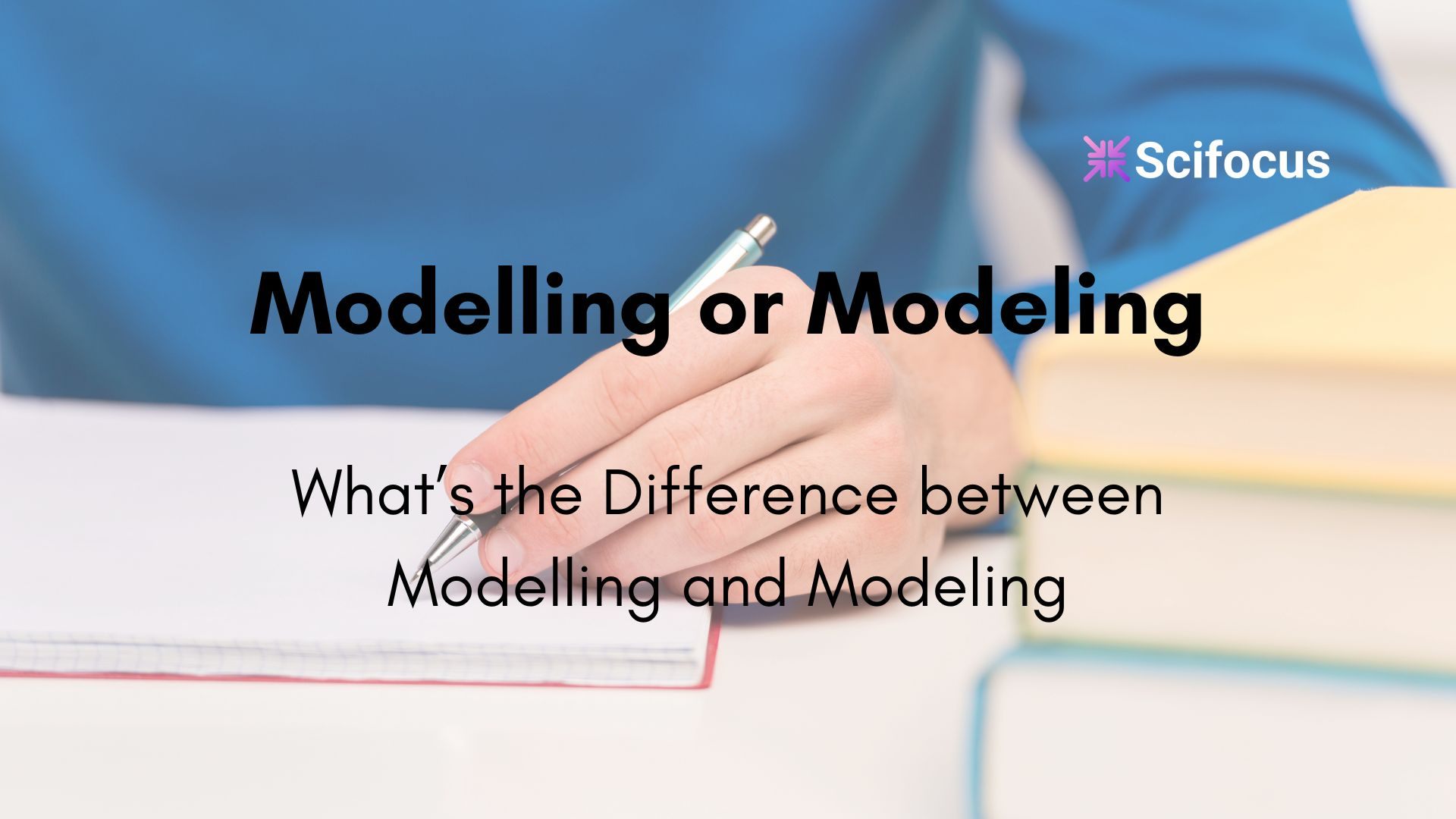Modelling or Modeling: What’s the Difference between Modelling and Modeling?

Ever stared at a sentence and thought, “Wait… is it modelling or modeling?” Honestly, you’re not alone. Students all over the world run into this question, especially when juggling essays, lab reports, or academic research. The thing is, this isn’t just a spelling debate—it’s about context, professionalism, and sometimes even credibility. Stick around, and you’ll understand the difference, see real examples, and learn how Scifocus can be your secret weapon for flawless academic writing.
What Is Modeling Anyway?
Let’s start simple. Modeling is the process of creating a representation, simulation, or example of something. Think of it as making a smaller or simplified version to understand or analyze the real thing.
You’ve probably seen it in a few different areas:
- Art & Design: Clay modeling, 3D modeling in animation or games, and architectural scale models.
- STEM Fields: Data modeling for research, financial modeling for business forecasting, and predictive modeling in AI.
- Human Behavior: Role modeling—observing and learning from someone else.
You know what’s fascinating? Modeling isn’t just for professionals. When your physics teacher shows a scale model of a bridge, that’s modeling. When a biologist simulates population growth, that’s modeling too. Even picking a mentor? Social modeling in action.
Want to see a solid definition? Check out Vocabulary.com for clarity.
Modelling vs Modeling – Spelling Showdown
Here’s the part that trips up most students: the single L vs double L.
- Modeling (one L) = American English
- Modelling (two Ls) = British English
Practical examples make it crystal clear:
- US English: She is modeling a new design for her project.
- UK English: She is modelling a new design for her project.
Consistency matters. Especially in academic writing or professional documents. Tools like scifocus helps you stay on track.
Students often search:
- “modeling vs modelling uk”
- “modelling or modeling which is correct”
- “modelling or modeling australia”
and SciFocus can guide you through all these variations effortlessly.
When Does the Difference Actually Matter?
You might ask, “Do I really need to care?” Short answer: yes. Here’s why:
- Academic Writing: Professors often prefer one convention over another. Mixing spellings can make your essay look sloppy.
- Professional Documents: CVs, research papers, and presentations all benefit from consistency.
- Casual Writing: Social media or blogs? Less strict, but consistency still impresses.
Honestly, a small detail like this can make a big difference. And here’s the kicker: Scifocus can instantly scan your text and highlight which version fits your target audience.
Beyond the Spelling – Understanding Modeling in Contexts
1. Art and Design
- Clay modeling: The classic hands-on method from school art projects.
- 3D modeling software: Blender, Maya, Tinkercad. Your digital playground.
- Architecture: Scale models to visualize structures before building.
2. STEM and Analytics
- Data modeling: Structuring and analyzing information. Learn more in our data modeling guide.
- Financial modeling: Forecasting business scenarios. Useful for assignments and internships.
- Predictive modeling: AI predicts outcomes, from disease trends to market behavior.
3. Human Behavior
- Role modeling: Learning by observing others. Curious about how role modeling affects academic habits? Check our role modeling guide.
These examples show why modelling or modeling isn’t just a spelling game—it’s about understanding context.
Tips for Students to Remember the Correct Usage
- Mnemonic: US = 1 L, UK = 2 Ls. Simple and memorable.
- Use SciFocus:
- Check whether modelling or modeling fits your context.
- Compare sources from both US and UK English without confusion.
- Access examples for essays, research projects, and presentations. (SciFocus Writing Assistant)
- Follow Guidelines: Your professor or institution may specify US or UK English. SciFocus ensures you stay compliant.
Honestly, after a few uses, it becomes second nature. You’ll feel more confident writing, citing, and presenting work that looks polished and professional.
FAQs About Modelling or Modeling
1. What is the definition of modeling?
Modeling is creating a representation, simulation, or example of something, whether in art, data, or behavior.
2. When should I use modelling vs modeling?
Use modeling in American English contexts and modelling in British English contexts. SciFocus can help you pick the right one.
3. Is modeling more common in the US?
Yes. US English favors the single L, while the UK prefers the double L.
4. Are there exceptions in professional writing?
Consistency is key. Mixing spellings can confuse readers and reduce credibility. SciFocus helps maintain uniformity.
5. Can I mix both spellings in the same document?
Technically yes, but it’s not recommended. Stick with one version per document. SciFocus can automatically check your entire text for uniform spelling.
So, whether you’re shaping clay, crunching numbers, or just aiming to ace your next essay, you now know the difference between modelling and modeling. With SciFocus by your side, you get a personal writing assistant, research guide, and consistency checker all in one. Your projects, papers, and presentations will not only be correct—they’ll look polished and professional.
Did you like this article? Explore a few more related posts.
Start Your Research Journey With Scifocus Today
Create your free Scifocus account today and take your research to the next level. Experience the difference firsthand—your journey to academic excellence starts here.
